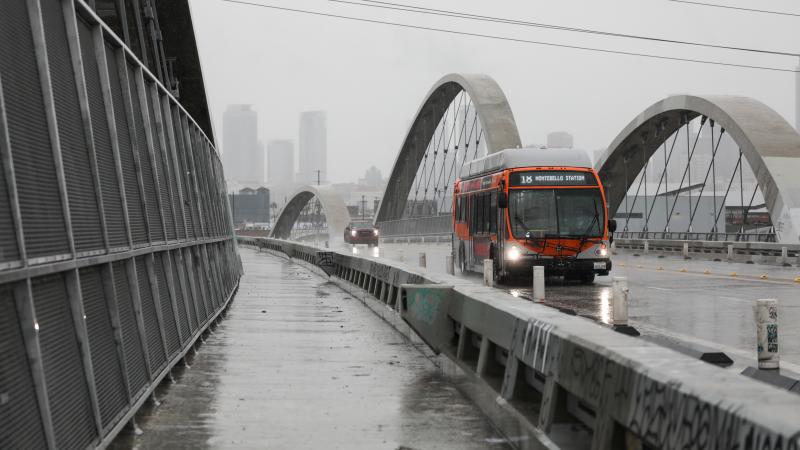After original plastic bag ban backfired, California looks to a bigger ban to solve the problem
Unintended Consequences: The amount of plastic bags Californians threw away increased by approximately 50% since the ban became law. Now, California lawmakers are eyeing stricter bans to address the problems that the original ban may have created.
In 2014, then-California Gov. Jerry Brown announced that his state would be the first in the nation to ban single-use plastic bags. Brown called it a “step in the right direction.”
“We’re the first to ban these bags, and we won’t be the last,” Brown boasted in the announcement.
Brown was right about California leading a trend, but data now shows that the amount of plastic bags Californians threw away increased by approximately 50% since the ban became law. Now, California lawmakers are considering stricter bans to address the problems that the original ban created.
Doubling down and the loophole
According to a study led by Environment America, 28 states and 500 municipalities across the U.S. had plastic-bag legislation in place as of 2021. Additionally, 12 states have banned single-use plastic bags.
While Gov. Brown and many environmentalists believed California’s bag ban was a step in the right direction, the concerns of critics may have have turned out to be correct. According to a study by CalRecycle, California’s recycling agency, the year the law was passed, Californians threw out 150,000 tons of plastic bags. By 2022, that number had jumped to 230,000 — a 50% increase.
According to The Mercury News, a loophole in the 2014 California law was added by Democratic lawmakers in Sacramento who had plastic bag factories in their districts. The exception allowed people to pay extra for thicker plastic bags, and shoppers, it turns out, were willing to add another dollar to their grocery bill for the convenience of a plastic bag.
Studies by environmental groups find that the bans on single-use plastic does reduce the use of those types of bags. However, studies that look at the amount of plastic used and wasted from the alternatives find the amount of waste goes up. A study released this year on the bag ban in New Jersey found that the shift to alternative bags following the ban resulted in a three-fold increase in plastic consumption for bags.
Rather than consider the wisdom of plastic bags in light of the law of unintended consequences, California lawmakers are doubling down with an effort to ban the thicker plastic bags. Senate Bill 1053 and Assembly Bill 2236 would ban the thicker bags that people were willing to pay for, leaving them with only the choice of using reusable bags or paper bags.
Reusable bags, which are made from woven polypropylene — a type of recycled plastic — or cotton, require a lot more energy to produce and they need to be washed regularly to prevent contamination. Polypropylene bags have to be used approximately 20 times before there’s a net reduction.
Cotton bags need to be used over 7,000 times before there’s a net environmental benefit over that of single-use plastic bags. Paper bags use 20 times more water to produce than single-use plastic bags, and they take up more space, meaning more energy to transport.
While they’re called single-use plastic bags, they actually get reused. Recyc-Quebec, a Canadian government agency, found that nearly 78% of plastic are reused as small trashcan liners. More than 90% of Americans reuse their plastic bags, according to a 2007 survey by the American Plastics Council, an industry group. When plastic grocery bags are banned, people just buy more plastic bags for these other uses.
Other consequences
Erin Haas, director of the the American Recyclable Plastic Bag Alliance at the Plastics Industry Association, another plastic industry group, told Just the News that the plastics industry and ban advocates share the same goal.
“I grew up in New England. I hate seeing plastic, anything on the side of the road: aluminum cans, Chick-fil-A bags, McDonald's bags — no one wants to see plastic waste in the ocean or in a lake or anywhere. And I think it really comes from an emotional positivity,” Haas explained.
For those seeking that quick solution, she said, the bans are attractive. The unintended consequences, she said, go beyond the increased waste and environmental impacts. She said there are facilities in California that produce bags, and those will close if these new bans are passed. That means lost jobs. She also points out that the bag bans can impact underserved communities.
“Not everybody can afford to go to a fancy Whole Foods and get a paper bag, or pay for the $4 bag,” Hass said.
The poor are also less likely to have their own vehicles, and the thin-film plastic bags targeted by the bans are the best means for people to carry groceries home on public transportation.
“Underserved communities, as usual, always get hit the hardest with things like this,” Hass said.
The reusable polypropylene bags are usually produced in China and shipped to the U.S., she said, which also increases the carbon dioxide emissions. Small convenience stores in California, Hass said, won’t have the space to store paper and reusable bags for their customers.
“Plastic bags come on a nice little roller, and you can put them right underneath the countertop. And it's easy peasy, done and done,” Hass said.
Other solutions
Hass said that a better approach to the problem is to have recycling collection centers at the grocery store for people to bring their bags, perhaps as part of a buyback problem. She said some of the Plastic Industry Association members are not only producing plastic bags, they’re taking used bags to make recycled content.
Expanding domestic recycling capacity and usage would cut down on the problem of a lot of plastic recycling not ending up in recycling facilities. An ABC News investigation placed 46 trackers in plastics dropped off at stores for recycling and found most of them didn’t end up in recycling facilities.
Ultimately, plastic recycling is difficult and expensive. Journalist and environmental author Michael Shellenberger argues that modern landfills and incinerators have so many protections for the environment and public health that throwing away plastics ensures that it won’t end up in the ocean, as recycled material shipped overseas sometimes does.
These potential solutions to the problem of plastic waste get pushed to the side as the lure of plastic bag bans remains strong.
"Ten years ago, California attempted to ban plastic bags to stem pollution. Yet, these insidious relics persist, choking our waterways, imperiling wildlife, and despoiling our ecosystems," California assembly member Rebecca Bauer-Kahan, a Democrat, said in a statement on the bills taking aim at thicker plastic bags.
As California looks to stricter bans, more states are jumping on the ban bandwagon. The Massachusetts Senate last week passed a bill that would enact the same ban California pursued 10 years ago.
The Facts Inside Our Reporter's Notebook
Links
- Brown boasted in the announcement
- study led by Environment America
- According to a study by CalRecycle
- Studies by environmental groups
- study released this year on the bag ban in New Jersey
- According to The Mercury News
- Senate Bill 1053
- Assembly Bill 2236
- before thereâs a net reduction
- used over 7,000 times
- according to a 2007 survey
- ABC News investigation
- argues that modern landfills and incinerators
- said in a statement
- passed a bill
















